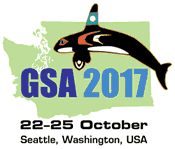Sullivan et al., 2017
UNRAVELING HOW LANDSCAPE HETEROGENEITY ALTERS CONCENTRATION DISCHARGE BEHAVIOR IN CARBONATE HEADWATER STREAMS
Sullivan, P., Stops Jr., M., MacPherson, G.L., Li. L., and Dodds, W.K. (2017)
2017 Geological Society of America Fall Meeting, Seattle, WA, 22-25 October
-
Calhoun, Shale Hills, INVESTIGATOR, COLLABORATOR
-
Shale Hills, INVESTIGATOR
Abstract
Heterogeneity in catchment subsurface water storage and its connectivity (timing and flux) to the stream governs the integrated outlet chemical behavior. Differences in water residence times and the distribution of mineral and organic pools (vertically and spatially) results in an array of biogeochemical processes, and thus signals that are transmitted from the terrestrial to the aquatic environment. One grand challenge in science now is predicting how water quality will change with future climate and land use changes. What we know is that over a wide range in stream discharge some solutes behave chemostatically - small changes in solute concentrations with discharge -, while other solutes behave chemodynamically - large changes in solute concentrations with
discharge. Yet, between catchments solute concentration-discharge behavior can change. These differences are often related to landscape and flow path heterogeneity.
We focus on the well-studied Konza Prairie (KS, USA), a 35 km2 tallgrass biological research station made up of 60 watersheds. Here, nearly 40 years of fire management practices have resulted in the emergence of woodyencroached watersheds where fire frequency return intervals are four years or greater. We selected four adjacent headwater watersheds underlain by the same lithology - Permian age repeating couplets of limestone (1-2 m thick) and mudstone (2-4 m thick) - that experience 1, 2, 4, and 20 year burn regimes, and thus different degrees of woody encroachment. From 2015 to present, stream water discharge has been monitored continuously, while solute concentrations were collected three times per week. Nine major anion and cation concentrations were examined, watersheds consistently demonstrated dilution behavior (reduction in concentration with increased discharge) for chloride and sulfate, and chemostatic behavior for potassium. In all other instances, watersheds exhibited dilution, chemostatic or addition (increased concentration with increased discharge) behaviors for the same solute. We explore how landscape differences drive concentration discharge patterns between the various watersheds at Konza by coupling the reactive transport model RT-Flux-PIHM with
the biogeochemical model Biome-BGC.
Citation
Sullivan, P., Stops Jr., M., MacPherson, G.L., Li. L., and Dodds, W.K. (2017): UNRAVELING HOW LANDSCAPE HETEROGENEITY ALTERS CONCENTRATION DISCHARGE BEHAVIOR IN CARBONATE HEADWATER STREAMS. 2017 Geological Society of America Fall Meeting, Seattle, WA, 22-25 October .
 This Paper/Book acknowledges NSF CZO grant support.
This Paper/Book acknowledges NSF CZO grant support.
Explore Further



